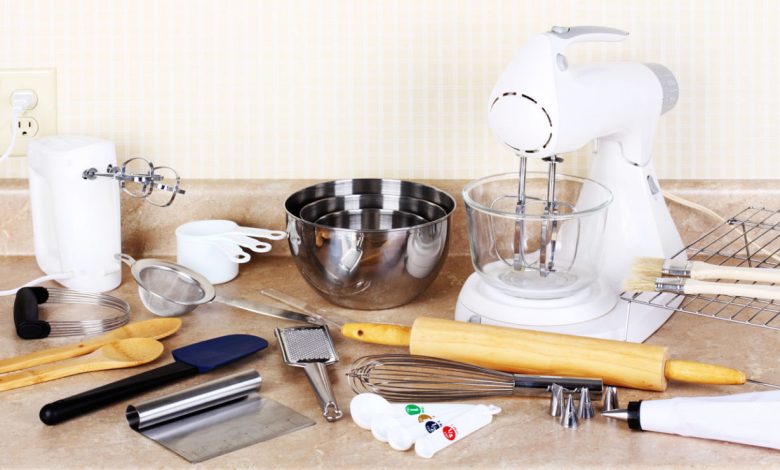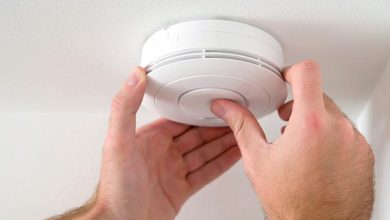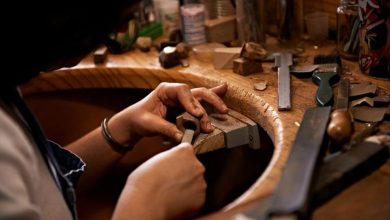Baking Tech Tools Enhance Precision and Creativity in Culinary

The art of baking, steeped in tradition and precision, is undergoing a remarkable transformation, driven by an array of sophisticated Baking Tech Tools. What was once a craft relying heavily on manual labor, intuition, and analog measurements is now being augmented by cutting-edge technology, ushering in an era of unprecedented culinary innovation. These advancements are not just making baking easier; they’re enhancing precision, fostering consistency, and expanding creative possibilities for both home bakers and professional patissiers alike. Understanding this technological evolution – the tools reshaping the kitchen, their benefits, and their profound impact on the baking process – is crucial for anyone passionate about culinary arts or navigating the future of food preparation.
The Digital Kitchen

For centuries, baking remained largely unchanged, relying on the baker’s experience to judge dough consistency, oven temperature, and ingredient ratios. While intuition and touch still hold their place, modern baking tech tools provide a layer of scientific precision that was previously unattainable, elevating the craft to a new level of consistency and control.
A. The Evolution of Baking Technology
From rudimentary ovens to smart appliances, baking technology has steadily progressed, mirroring broader advancements in engineering and electronics.
- Early Innovations: The first significant advancements were the development of consistent ovens and mechanical mixers, replacing open fires and arduous hand-kneading. These laid the groundwork for standardized recipes and larger-scale production.
- Precision Temperature Control: The advent of reliable thermostats in ovens in the mid-20th century was revolutionary, allowing for consistent baking temperatures crucial for perfect results.
- Digital Scales and Timers: The introduction of digital scales offered unparalleled accuracy in measuring ingredients, moving beyond volumetric measurements that can vary widely. Digital timers brought precise timing to baking processes.
- Smart Appliances and IoT: The current era is defined by the integration of smart technology and the Internet of Things (IoT). Ovens connect to Wi-Fi, scales send data to apps, and mixers offer programmed settings, all aimed at enhancing control and convenience.
- Specialized Software and AI: Beyond physical tools, software applications and even AI are beginning to play a role, from recipe management and scaling to predicting optimal baking times and temperatures.
B. Why Baking Benefits from Technology
The seemingly traditional art of baking finds significant advantages in embracing modern technology.
- Unparalleled Precision: Baking is a science. Accurate measurements of ingredients (weight over volume), precise temperature control, and consistent mixing times are critical for chemical reactions. Tech tools deliver this precision consistently.
- Consistency and Repeatability: Once a perfect recipe and process are established, tech tools allow for exact replication, ensuring consistent results batch after batch, which is vital for both home bakers and commercial operations.
- Efficiency and Time Saving: Automated features, smart programming, and efficient mixing or proving processes can significantly reduce manual effort and active preparation time, freeing up bakers for other tasks or more creative work.
- Expanded Creativity and Experimentation: By automating the fundamentals, tech tools empower bakers to experiment more freely with new ingredients, techniques, and designs, pushing the boundaries of traditional baking. They reduce the risk associated with complex recipes.
- Reduced Waste: Precision measurement and consistent results minimize errors and spoiled batches, leading to less ingredient waste.
- Accessibility: Automated and smart features can make complex baking processes more accessible to beginners or those with physical limitations, lowering the barrier to entry for aspiring bakers.
The Essential Baking Tech Tools
The modern baker’s kitchen is increasingly equipped with a range of specialized tech tools, each designed to optimize a specific stage of the baking process.
A. Precision Measurement and Preparation Tools
Accuracy is paramount in baking, and technology delivers it with unparalleled consistency.
- Digital Kitchen Scales:A. Gram Precision: Essential for accurate ingredient measurement, particularly for flour, sugar, and liquids. Many high-end models offer resolution to 0.1 grams.B. Tare Function: Allows bakers to reset the scale to zero after adding an ingredient, making it easy to measure multiple ingredients into one bowl.
C. Unit Conversion: Instant conversion between grams, ounces, pounds, and milliliters for recipe flexibility.
D. Integrated Apps: Some smart scales connect to apps, offering recipe scaling, nutritional information, and ingredient tracking.
- Digital Thermometers:A. Oven Thermometers: Crucial for verifying that the oven’s internal temperature matches the set temperature, as oven thermostats can be inaccurate.B. Instant-Read Thermometers: For measuring the internal temperature of bread, cakes, custards, and other baked goods to ensure they are perfectly cooked and safe.
C. Candy/Deep-Fry Thermometers: For precise temperature control when working with sugar syrups or deep-frying doughnuts.
- Smart Measuring Cups/Spoons: While less common than scales, some smart devices use sensors to measure liquids or powders with digital precision, sometimes connecting to apps for recipe integration.
B. Smart Mixing and Processing Equipment
Automating the labor-intensive stages of dough and batter preparation.
- Stand Mixers (with Smart Features):A. Programmable Settings: High-end models may feature pre-programmed settings for kneading, whipping, or mixing different types of doughs and batters.B. Integrated Scales: Some mixers now come with built-in scales to measure ingredients directly in the mixing bowl.
C. Wi-Fi Connectivity: Smart mixers can connect to apps, allowing remote control, recipe synchronization, and even guided mixing processes.
- Bread Machines/Bread Makers:A. Automated Baking: Fully automate the process of kneading, rising, and baking bread, requiring minimal manual intervention.B. Programmable Cycles: Offer various settings for different bread types (e.g., whole wheat, gluten-free, rapid bake) and can often be programmed to start baking overnight for fresh bread in the morning.
- Food Processors and Blenders (High-Tech): While not exclusively baking tools, powerful food processors and high-speed blenders are essential for tasks like making pie crusts, pureeing fruit, grinding nuts, or making smooth glazes and fillings. Advanced models offer precise speed control and pre-set programs.
C. Precision Baking and Proving Environments
Controlling temperature and humidity is vital for perfect rise and texture.
- Smart Ovens:A. Precise Temperature Control: Advanced sensors and algorithms maintain highly stable internal temperatures.B. Convection Baking: Built-in convection fans circulate hot air, ensuring even baking and browning, especially for multiple trays.
C. Steam Injection: Some professional and high-end home ovens offer steam injection, crucial for creating crisp crusts on artisan bread.
D. Integrated Probes: Meat probes can also be used for large baked goods or custards to monitor internal temperature.
E. Wi-Fi Connectivity and App Control: Remote preheating, recipe synchronization, guided cooking modes, and diagnostics via smartphone apps.
F. Self-Cleaning Features: Pyrolytic or steam cleaning functions simplify post-baking cleanup.
- Proofing Boxes/Dough Provers:A. Controlled Environment: Maintain precise temperature and humidity levels for optimal dough proofing, ensuring consistent rise and texture, especially for sourdough or yeasted breads.B. Programmable Settings: Allow bakers to set specific temperature and humidity profiles for different types of dough.
- Induction Cooktops: While primarily for stovetop cooking, induction can offer extremely precise and rapid temperature control for tasks like making custards, glazes, or tempering chocolate.
D. Digital Decorating and Finishing Tools
Technology is also influencing the artistry of baking.
- Digital Food Printers: For professional use, these machines can print edible designs, logos, or intricate images directly onto cakes, cookies, or fondant using food-grade ink.
- Temperature-Controlled Chocolate Temperers: Essential for working with chocolate, these devices maintain precise temperatures for perfect tempering, ensuring a smooth, glossy, and snap-able finish.
- High-Precision Handheld Tools: Digital pH meters for sourdough starters, laser thermometers for oven surfaces, or precise digital timers for specific baking steps.
The Profound Impact for the Baking Landscape

The integration of technology into baking is not just about individual tools; it’s about a systemic shift that impacts skill development, creative potential, and the very nature of the baking profession.
A. Elevating Precision and Consistency
The biggest game-changer is the ability to achieve unprecedented levels of accuracy and repeatability.
- Reduced Error Margin: Digital scales eliminate human error in weighing ingredients. Precise oven temperatures prevent under or over-baking. This minimizes spoiled batches and ingredient waste.
- Professional-Quality Results at Home: Home bakers can now achieve results that were once the exclusive domain of professional patissiers, thanks to tools that mimic commercial-grade control.
- Reliable Recipe Development: For recipe developers, tech tools allow for precise testing and iteration, ensuring that recipes are foolproof and consistently deliver the intended outcome for others.
- Standardization for Commercial Baking: In large-scale operations, smart ovens and automated mixers ensure every product meets exact specifications, critical for brand consistency and customer satisfaction.
B. Unleashing Creativity and Experimentation
By handling the foundational precision, technology frees up the baker’s mind for innovation.
- Complex Recipe Exploration: Bakers can confidently tackle more complex recipes, knowing that the basic steps like mixing and temperature control are managed by technology.
- Novel Ingredients and Techniques: Precise control allows for experimentation with new or sensitive ingredients, or the development of entirely new baking techniques that rely on specific environmental conditions.
- Artistic Freedom: Automated decoration tools or precise tempering machines allow bakers to focus more on the aesthetic design and artistic presentation of their creations, pushing the boundaries of edible art.
- Learning and Skill Acceleration: Beginners can learn faster by relying on smart features to guide them through processes, building confidence before tackling fully manual techniques.
C. Enhanced Efficiency and Workflow Optimization
Technology streamlines the baking process, benefiting both hobbyists and professionals.
- Time Savings: Automated kneading, rising, and baking cycles in bread machines, or remote preheating of smart ovens, save active preparation time.
- Multi-Tasking: With smart appliances handling specific steps, bakers can manage multiple tasks simultaneously, improving overall kitchen efficiency.
- Reduced Labor (Commercial): In commercial settings, automated mixers, depositors, and ovens significantly reduce manual labor, allowing staff to focus on quality control, finishing, and new product development.
- Data-Driven Improvement: Logging data from smart appliances (e.g., actual oven temperatures, proofing times) can help professional bakers analyze and continuously optimize their processes.
Challenges and Considerations in Tech-Driven Baking
While baking tech tools offer immense advantages, their integration also presents challenges that require thoughtful navigation.
A. Cost and Accessibility
High-end baking tech tools can be a significant investment, creating a barrier to entry for some.
- Initial Investment: Smart ovens, high-capacity stand mixers, and specialized proofing boxes can be expensive, limiting access for home bakers on a budget or small startups.
- Maintenance and Repair: Like all electronics, these tools require maintenance and can be costly to repair if they malfunction.
- Digital Divide: Access to reliable internet and technical literacy is required for smart appliances, which can exclude some potential users.
B. Over-reliance and Skill Atrophy
There’s a concern that over-reliance on technology might diminish fundamental baking skills.
- Loss of Intuition: If bakers always rely on smart probes and automated cycles, they might not develop the intuitive “feel” for dough, the visual cues for doneness, or the ability to troubleshoot problems without technology.
- Reduced Troubleshooting Skills: If a smart appliance breaks down, a baker might be at a loss without understanding the underlying principles it automates.
- Dependence on Connectivity: Smart appliances rely on Wi-Fi and app ecosystems. Any disruption in connectivity or app support can render “smart” features unusable.
C. Energy Consumption and Sustainability
The proliferation of connected appliances raises questions about their environmental footprint.
- Increased Energy Use: While individual appliances may be efficient, the cumulative energy consumption of a fully tech-enabled kitchen needs consideration.
- E-Waste: The shorter lifespan of electronic components in appliances can contribute to electronic waste.
- Data Privacy: Smart appliances collect usage data, raising concerns about data privacy and how that information is used.
D. The Human Touch and Artistry
Can technology truly replicate the subtle artistry and unique touch of a human baker?
- Art vs. Science: While baking is a science, it’s also an art. The debate continues about whether technology can replicate the nuanced “feel” or the unique characteristics that a human baker brings to a product.
- Lack of Adaptability in Unforeseen Situations: Human bakers can adapt to unexpected variations in ingredients or environmental conditions in real-time in ways that automated systems cannot (yet).
- Loss of Sensory Experience: The tactile and sensory experience of traditional baking – kneading dough by hand, feeling the texture of a batter – is a rewarding part of the craft that technology might reduce.
The Future of Baking Tools
The future of baking is not about technology replacing the baker, but rather about a powerful collaboration between human skill and advanced tools. It’s about augmenting human creativity with unprecedented precision and efficiency.
A. Smarter, More Intuitive Appliances
The next generation of baking tech tools will be even more intelligent and user-friendly.
- Predictive Analytics: Ovens that learn baking habits and automatically suggest optimal temperatures and times based on real-time factors like humidity.
- AI-Powered Recipe Generation: AI tools that can generate new, unique recipes based on desired flavor profiles, dietary restrictions, and ingredient availability.
- Integrated Sensors: More sophisticated sensors in mixers that monitor dough development (e.g., gluten formation) and automatically adjust mixing times.
- Augmented Reality (AR) for Decorating/Instruction: AR overlays on screens or smart glasses that guide bakers through complex decorating steps or provide real-time visual feedback on techniques.
B. Hyper-Personalization and Dietary Needs
Technology will increasingly cater to individual dietary requirements and health goals.
- Automated Dietary Adjustments: Appliances that can automatically convert recipes for gluten-free, dairy-free, or low-sugar diets with precision.
- Nutritional Tracking: Smart tools that provide real-time nutritional breakdowns of baked goods as ingredients are added.
- Personalized Baking Profiles: User profiles that store preferred textures, sweetness levels, and baking outcomes, and adjust recipes accordingly.
C. Sustainable Baking Technologies
The industry will focus more on energy-efficient and environmentally conscious baking tools.
- Energy-Efficient Appliances: Development of ovens and mixers that consume less energy.
- Waste Reduction Tools: Smart systems that help optimize ingredient usage and minimize food waste.
- Reparability and Longevity: Design of appliances that are easier to repair and have longer lifespans, reducing e-waste.
D. Blended Learning and Skill Development
Technology will continue to play a crucial role in baking education and skill development.
- Virtual Baking Classes: Immersive online classes with interactive simulations or AR guidance that allow students to practice techniques virtually.
- AI-Driven Feedback: AI that can analyze video of a baker’s technique (e.g., kneading, whisking) and provide real-time corrective feedback.
- Connected Baking Communities: Enhanced online platforms where bakers can share recipes, troubleshoot problems, and collaborate on projects, leveraging smart appliance data.
Conclusion
The integration of Baking Tech Tools is fundamentally transforming the culinary world, ushering in an era of unprecedented culinary innovation. By offering unparalleled precision, enhancing consistency, and freeing up creative potential, these technologies are making baking more accessible, efficient, and exciting for everyone. While challenges related to cost, skill atrophy, and the balance between human touch and automation persist, the future of baking is undoubtedly a collaborative one.
It’s a future where the timeless artistry of the baker is powerfully augmented by intelligent machines, allowing for greater experimentation, perfect execution, and ultimately, even more delicious creations. For those passionate about food, understanding and embracing these technological advancements is key to navigating, shaping, and truly savoring the delectable future of baking. The kitchen is evolving, and with these tools, bakers are not just making food; they’re crafting the future of flavor.



